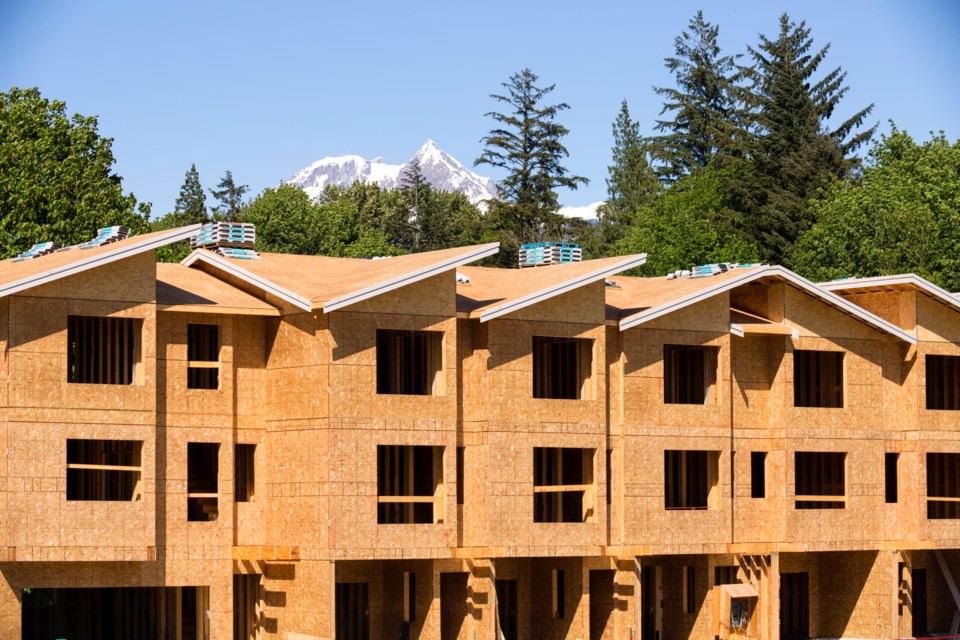Council has opted to temporarily decrease local requirements for the BC Energy Step Code if construction aligns with the highest level of the Zero Carbon Step Code.
At a regular business meeting on Tuesday, Nov. 21, Squamish council members unanimously approved three readings of a bylaw amendment that would lower the required energy step code for multifamily applications to Step 3 so long as the application commits to an emission level 4 of the zero carbon code.
The applications may still meet Step 4 of the BC Energy Step Code if they so choose or are required by the province. The BC Energy Step Code is a provincial standard that provides steps to achieving more energy-efficient buildings whereas the Zero Carbon Step Code sets a maximum for greenhouse gas emissions for new builds.
Adoption should come at a later regular business meeting, after which the amendment would be in place until January 2026 which is still one year ahead of the provincial government’s BC Building Code mandating Step 4.
Colin McCarthy, the manager of building services, told council that the amendment is partially due to increased costs that developments are incurring in Squamish to meet Step 4 of the energy code.
“Builders recently started receiving completed surveys of projected costs for buildings that will be required to meet Step 4 and those numbers are approximately up to 25% higher than buildings constructed under Step 3,” he said. “It is presumed by our industry contacts that it will be extremely difficult for builders to meet the airtightness requirements required by Step 4.”
Other difficulties, said McCarthy, included the availability of product that meets the higher step and contractors with knowledge of installation processes.
If an application has both residential and commercial portions, council added language that required the commercial aspects of a building to meet the emission level four like the residential aspects.
“I can understand stepping back on the building efficiency, which it sounds like that's where the complaints are, where the real cost is,” said Coun. Chris Pettingill. “Taking that step back on that cost and that impact I’m fine [with], as long as we can deal with that emissions piece, which is the real critical emergency piece.”
Pettingill also said it was his understanding that there would be some costs in “going first” in the District’s requirement to build to the highest level of the energy step code, but going down a step on that code and requiring the highest level of emissions efficiency was a fair trade-off.
“We are driving the market and there's some impacts with that. It also means that our contractors and suppliers that are operating here are going to be ahead and have an advantage, I think, over everyone else when they start to come along because they're all going to have to come along,” he said.
Mayor Armand Hurford summarized the move as taking a “half step back to go three steps forward.”
“This is a totally prudent step at this point,” he said.
For more information about the approval, please visit the District of Squamish’s website.
The video below explains what the step codes include.




